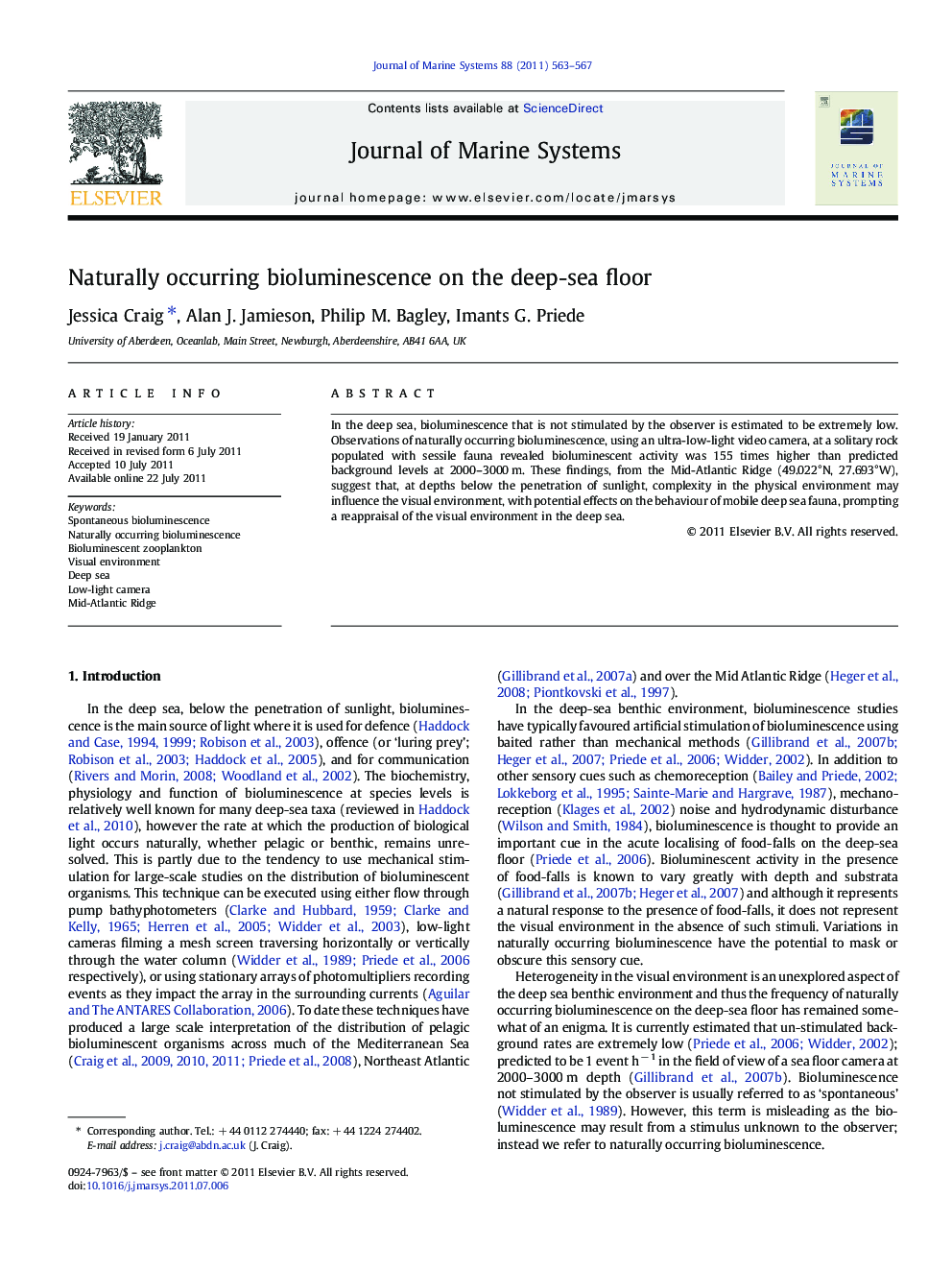| Article ID | Journal | Published Year | Pages | File Type |
|---|---|---|---|---|
| 4548393 | Journal of Marine Systems | 2011 | 5 Pages |
In the deep sea, bioluminescence that is not stimulated by the observer is estimated to be extremely low. Observations of naturally occurring bioluminescence, using an ultra-low-light video camera, at a solitary rock populated with sessile fauna revealed bioluminescent activity was 155 times higher than predicted background levels at 2000–3000 m. These findings, from the Mid-Atlantic Ridge (49.022°N, 27.693°W), suggest that, at depths below the penetration of sunlight, complexity in the physical environment may influence the visual environment, with potential effects on the behaviour of mobile deep sea fauna, prompting a reappraisal of the visual environment in the deep sea.
► High rates of naturally occurring bioluminescence were observed on the deep-sea floor. ► This is caused by zooplankton colliding with static obstruction: rocks populated with crinoids. ► This phenomenon is linked to areas synonymous with this type of substrata. ► Rates of naturally occurring events were higher than in the presence of bait. ► Results prompt reappraisal of heterogeneity of the visual environment in the deep-sea.
